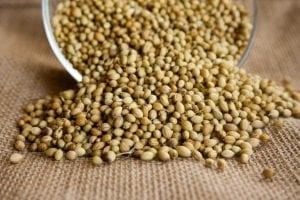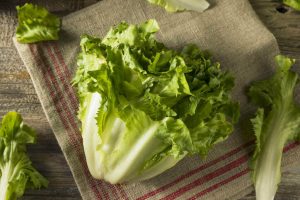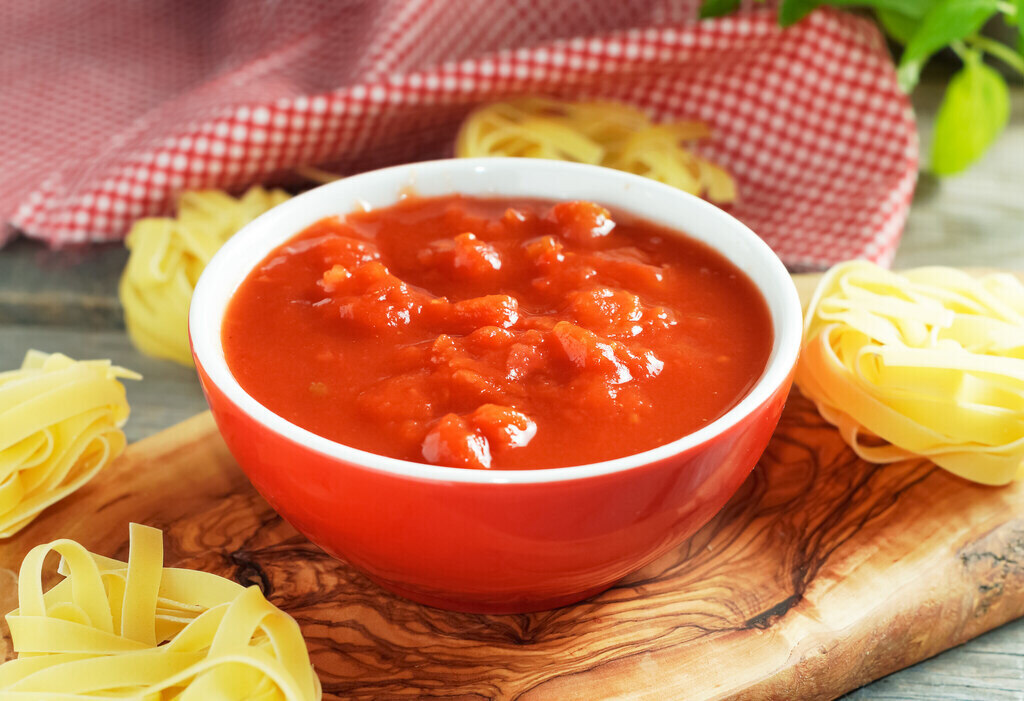
When one thinks of Italian food, pasta and pizza automatically come to mind. We’re sure by now it’s no longer news that they are staple foods in Italian cuisine. But to put it into perspective, pasta and pizza are pantry must-haves in Italian cuisine like rice is to most Asians. For this reason, tomato passata (or simply passata or strained tomatoes) has also become an Italian pantry essential. In fact, no Italian pantry can be called “Italian” if you’re missing pasta and at least a bottle of this tomato purée.
But what is it exactly? Italian passata is responsible for providing rich tomato sauces in some of your favorite Italian dishes. However, these are just some of the more popular uses for this ingredient. You can also use this in many ways. For example, you can use it as a base for soups, stews, or braised briskets. Basically, you can put it in any dish that has tomato sauce in it.
Still don’t know what the fuss is about? Continue reading and we’ll discuss all the essentials you need to know when it comes to this Italian ingredient, from what it is, how to make it, and some recipes using it that you can try at home.
What Is Passata?
Passata di Pomodoro (tomato purée in English) sounds fancy and expensive. And like any foreign ingredients and dishes, most usually think it’s quite complicated to make too. Passata is just plain and uncooked tomato purée (just as the name suggests) that’s been skinned, deseeded, and then sieved and packed into jars and bottles. Others season their tomato purée with salt and sugar, and also with some basil leaves. However, the authentic recipe contains just plain tomatoes. Soon when you try making it, you’ll find out this tomato purée is easy to make despite the long process.
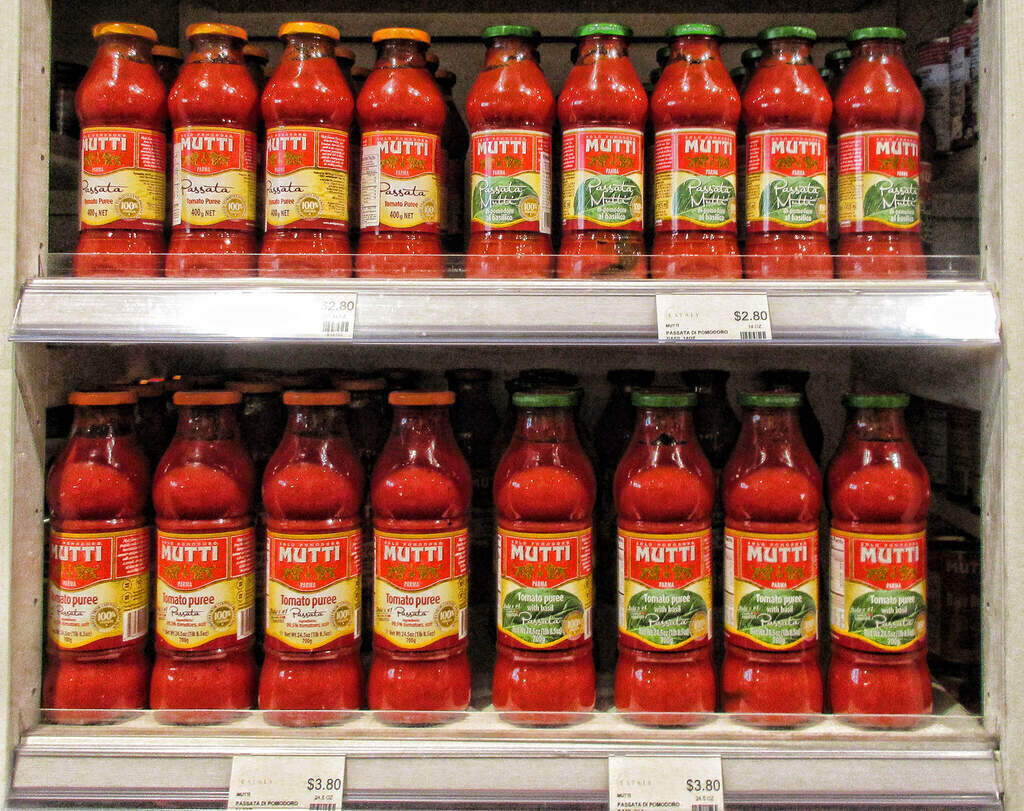
Flickr | Terence Faircloth
Despite the similarities in appearance, tomato passata is different from other tomato sauces. One good way to tell them apart from each other is by their consistency. Passata has a thicker, smoother texture and consistency because it’s been sieved and rid of excess water. The flavors are different too. Also, this Italian staple is fresher compared to the others because it has not been cooked down before being processed, strained, and stored in jars.
But another reason why Italians favor this among other varieties is that it’s great for quick meal preps, thanks to its already intense and thick consistency. On the other hand, cutting prep time for crushed or diced tomatoes is a more daunting task because you need to build their flavor by reducing the water content. You can achieve this by simmering the watery tomatoes into a sauce, cooking the tomatoes completely. Nevertheless, canned tomatoes are still a good passata substitute.
Passata vs Other Tomato Sauces
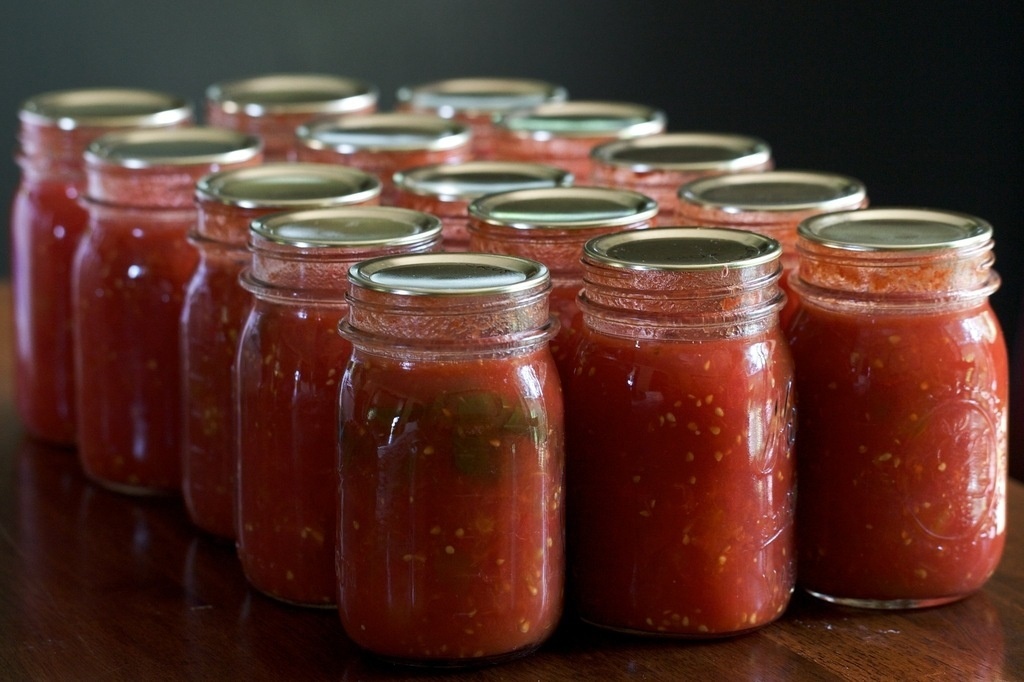
Flickr | Chiot’s Run
Given the names of these sauces, we know it’s easy to confuse one tomato sauce with the other, especially because they tend to look similar when packed in a bottle. And so, to better understand what sets passata sauce apart from other tomato sauces, we’ve listed down common varieties you should know. You never know, maybe you can also use these to substitute passata in your dishes.
- Canned Tomatoes – This store-bought tomato sauce has three varieties: crushed, diced, and whole. Canned tomatoes are usually peeled and heated before being sealed. Compared to passata, they are more watery and have chunks of tomatoes rather than having smooth puree-like consistency.
- Marinara Sauce (Pasta Sauce) – This tomato sauce is made with garlic, onions, and herbs like basil or parsley. As for its consistency, it’s slightly thicker than passata. If you’re going to use this as a substitute, you can water the sauce down to bring it closer to passata’s consistency.
- Tomato Paste – Tomato pastes have a thicker and more concentrated flavor than passata. You can achieve this by boiling tomatoes for several hours. Because tomato paste is more potent, they are relatively sourer than passata.
READ ALSO: 5 Tomato Paste Substitute Options Already in Your Kitchen
Delicious Tomato Passata Recipes to Try at Home
Using tomato passata in place of your usual tomato sauces at home is a no-brainer at all! You can use it as you would any tomato sauce in any recipe. That is if the recipe doesn’t call for chunky sauces like this tomato soup recipe. Otherwise, feel free to use this in any dish, if you don’t mind the absence of the pieces of tomatoes.
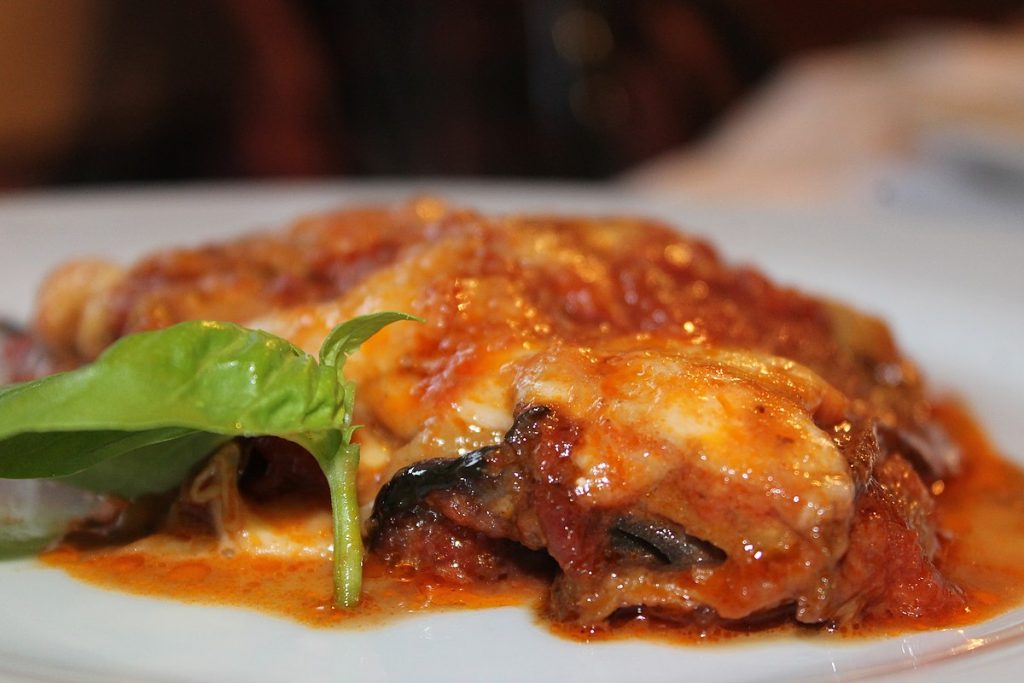
Wikimedia Commons | Schellenberg
With that said, here are some recipes you can try at home. From hearty stews and delectable pasta bowls to the famous cheesy pizzas, we’ve rounded up recipes with tomato sauces you can try to substitute with tomato passata.
- Veal Parmigiana Recipe — This is a classic Italian dish made with oven-baked veal sitting on top of a rich tomato sauce. Topped with a generous amount of parmesan and mozzarella cheese, we’re sure cheese lovers will love this dish!
- Classic Lasagna Recipe — Here is another classic Italian dish we grew to love. Enjoy the stack of flat pasta filled with meaty tomato sauce, ricotta cheese, and select spices and herbs.
- Copycat CPK Margherita Pizza — Margherita pizza has all you want if you’re looking for a pizza you can whip in a snap! In fact, passata is just the perfect tomato sauce for this recipe. Just spread it on the pizza crust, season it with salt, and then top it with mozzarella, parmesan cheese, and fresh herbs!
- Spaghetti Bolognese Recipe — This rich tomato-based sauce with ground beef is thick, creamy, and cheesy. Meat lovers will love this spaghetti bolognese recipe in no time!
- Hearty Beef Stew — Ever found yourself needing a hearty bowl of comforting soups and stews? Try this beef stew recipe that has melt-in-your-mouth lean beef chucks with thick and heavily-spiced broth.
READ ALSO: 50 Types of Pasta and Their Best Pairing Sauce
How to Make Your Own Passata
Passata is easy to prepare despite the laborious effort it requires to make them. But before you make it, it’s important to note that the key to a great passata (or any tomato sauce really) is ripe San Marzano tomatoes. San Marazano tomatoes also have a sweeter flavor without too much acidity. Not to mention, its dense consistency and low seed count are perfect for sauces used in pasta and pizzas.
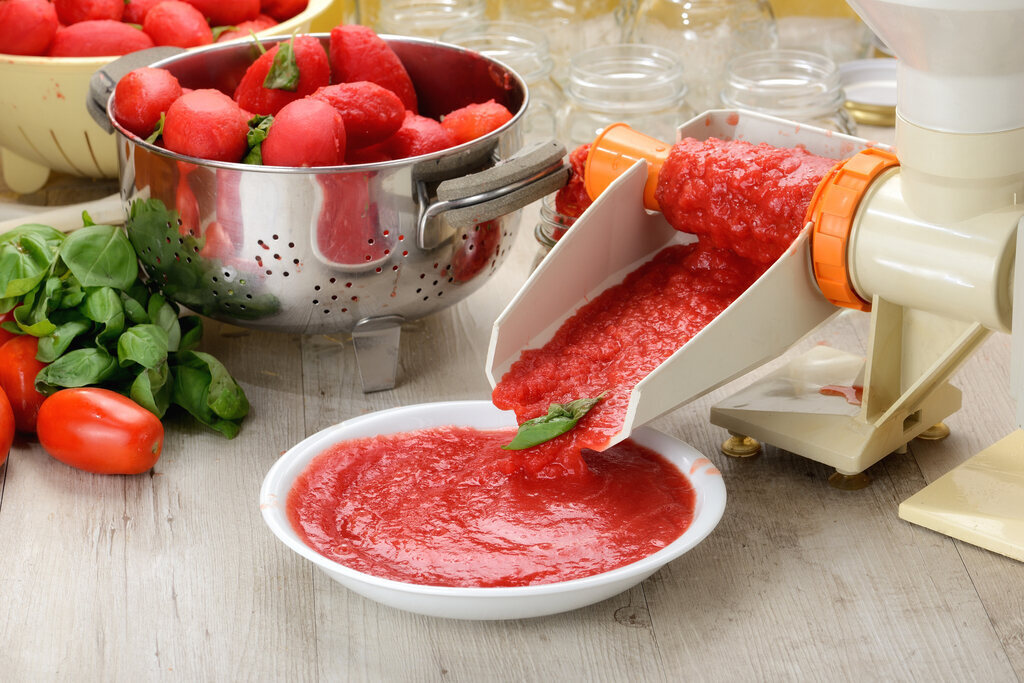
Here’s a list of ingredients you will need:
- 4 pounds (or 2 kilograms) ripe San Marzano or cluster tomatoes
- Salt (optional)
- Fresh basil leaves (optional)
Some tools and equipment:
- Tomato strainer machine (or food mill)
- Large pot
- Fine mesh strainer
Follow these easy steps to make passata:
- Check your tomatoes. Remove rotten and bruised tomatoes and then wash the remaining tomatoes over running water.
- Remove from water. Transfer tomatoes to the bowl and start cutting them in half.
- Using a knife, remove all seeds and inner parts. These are watery and putting them in your tomato sauce would make the consistency too runny.
- Transfer tomatoes to a large stock pot and cook on low heat. At this point, you just have to heat tomatoes until they are smashed into bits. Stirring helps break down chunks, so remember to stir from time to time. Once you see tomatoes water and inner parts break down, it’s time to turn off the heat.
- Get your strainer machine or food mill. Begin by pouring your tomatoes in the slot (if you’re using a strainer machine) and start processing your tomatoes. Apply pressure on the stomper to help the machine. If you’re using a food mill, simply pour the tomatoes into the food mill, then grip the top lever and crank the mill to force the tomatoes through the disk.
- If the passata is still too runny, pass it through a fine mesh. Pour the liquid in and stir until you get your desired consistency. Discard excess water and keep what’s in the fine mesh.
- Next, season your passata with salt. This is optional, but you may also add basil, garlic, sugar, and olive oil.
- Lastly, pour purée in sterilized glass jars. And then, store them in the pantry or the refrigerator.
Passata Is an Italian Cuisine Essential You Can Use in Cooking
Be it pizza, pasta, soups, or stews, passata makes a great tomato sauce for every dish you plan on cooking. Without a doubt, this tomato sauce deserves a spot in your pantry.


